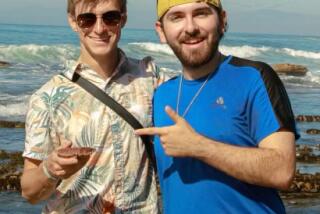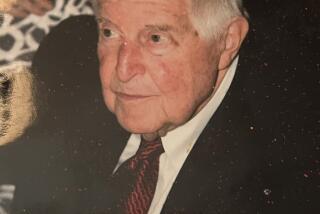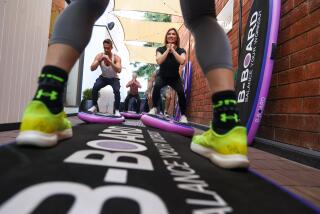Terry Martin dies at 74; legendary surfboard shaper
Well into his 70s, Terry Martin could be found most days in his Dana Point workshop sanding blocks of polyurethane foam into precision-shaped surfboards. With his big white beard and barrel chest, Martin looked like Santa riding out a blizzard of swirling white dust.
Over a nearly six-decade career, Martin is said to have shaped more surfboards than anyone — some 80,000 — although the exact number is unknowable. Martin himself once said he stopped counting after 50,000.
Martin’s output and perfectionism made him an icon among the tight-knit fraternity of surfing’s best shapers, one of a dwindling number of craftsmen who earn a living making surfboards by hand.
Martin, 74, died May 12 at his home in Capistrano Beach after a battle with melanoma. His death was announced by the Hobie Surf Shop in Dana Point, where he worked off and on for 40 years.
“He wanted to get out there and make another board up until the day he died,” said his wife of 43 years, Candy. “He was at his happiest when he was making people happy in the water.”
Martin’s career spanned surfing’s transformation from a fringe sport to a global business.
As surfing’s popularity has surged, the custom boards by hand-shapers who infuse their creations with the “soul” of experience have been largely replaced by factory-made products, primarily from Asia.
“It’s becoming a lost art,” Martin told The Times in 2007. “People don’t understand what goes into making a surfboard. It’s not something that can just be pumped out of a machine. Where’s the soul in that?”
Glen Terrance Martin was born Sept. 3, 1937, in El Centro and grew up in San Diego.
He took up surfing at 14, wrestling waves on a 13-foot, 85-pound wooden board — standard issue for 1952.
Martin built his own board, a composite of redwood and balsa he salvaged from a lumberyard’s trash heap. It was shorter, lighter and easier to maneuver in the water. Other surfers took note, and soon Martin was taking orders and making wood boards in his father’s garage.
After graduating from Point Loma High School, Martin served six years in the Air Force Reserves and worked a series of unfulfilling jobs in construction, shipbuilding and as a door-to-door salesman.
In 1963 Martin pestered surfing entrepreneur Hobie Alter to hire him as a shaper in his burgeoning Orange County shop. Foam had replaced wood as the material of choice, but shaping a surfboard that would perform underfoot still required an artist’s eye.
At the Hobie factory, Martin began a long apprenticeship alongside a stable of California’s finest shapers. Ultimately, he turned out as many as 10 boards a day.
It’s knowledge the affable Martin would pass on to countless apprentices of his own.
“He loved teaching kids how to shape,” Candy Martin said. “If they were motivated, he’d give them as much time as they needed. Kids just absolutely adored him, and he loved sharing what he knew with them.”
Other famous shapers of his era went on to make big money with lines of boards under their name. But although Martin made boards for professional surfers, he took pride in his ability to knock out a board in under an hour.
His nickname: “The Machine.”
“He shaped so many boards. All those numbers, all the repetition, it gave him a heads up over other shapers,” said surfing legend and shaper Mickey Munoz, Martin’s brother-in-law. “Surfing is a lifestyle business. Very, very few people make big money making surfboards. Terry shaped enough to pay the rent and provide food for his family. Beyond that, it was all about passion and love.”
Through repetition, Martin developed a Zen-like philosophy that the less a surfboard is shaped the better it will be.
“A shaper isn’t afraid to attack. They’re not crossing their fingers hoping they get it right. They know they’re going to get it right,” Martin told The Times.
At work in his dusty cubicle, Martin was a sculptor in flip-flops coaxing art out of anonymous blocks of foam.
“I had just as much fun this morning as I did when I started,” Martin told the Surfer’s Journal in 2005. “I get people my age who order a board from me and come in and watch me shape it. They’ll stand there for a while and then ask, ‘How long you been doing this?’ And I’ll say for a long time. And they’ll think for a while longer and say, “Wish I liked my job.’ ”
Besides his wife, Martin is survived by sons David of Temecula and Joshua of Capistrano Beach; daughter, Johana, of Capistrano Beach; and five grandchildren.
A paddle-out ceremony off Capistrano Beach by friends and family is planned.
More to Read
Start your day right
Sign up for Essential California for the L.A. Times biggest news, features and recommendations in your inbox six days a week.
You may occasionally receive promotional content from the Los Angeles Times.






